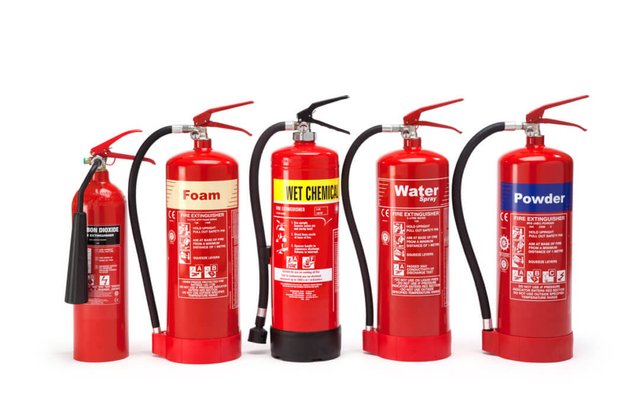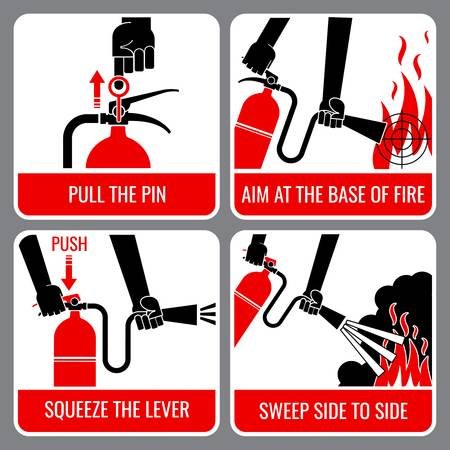FIRE AND SAFETY!
It is certain that the knowledge of safety especially in cases involving fire is vital. The truth is, you will need it to save yourself or someone someday!

Meanwhile! I have been working in an oil depot for quite some time now and i have got lots of experiences to share! One of which is a course on fire and safety i took during the course of the training and surely! I have seen it impress.
If you happen to work in an oil firm/facility or a facility involving lots of inflammables, you really have to take note. Work with machines that use gasoline! Read up. Offcourse a safe environment is the best working environment!
WHAT IS SAFETY AND THE IMPORTANCE OF SAFETY!
Health and Safety Environments (HSE) defines Safety as a state of being "safe", the condition of being protected against physical, occupational or other consequential failure, damage, error, accidents, harm and any other undesired event. Safety can also be defined as the control of recognized hazards to achieve an acceptable level of risk.
The importance of safety in a work place cannot be over emphasized. They include
- To prevent lost time accident.
- To avoid loss of life.
- To avoid loss of property.
- To avoid spillage.
- Teaches workers how to work in a safe environment.
- Helps everyone feel safe and happy.
- Teaches workers to pay attention to their surroundings.
- Protects company from law suit, citations and fines.
IMPORTANT TERMS ASSOCIATED WITH SAFETY AND THEIR MEANINGS:
Access Room:
The access room as it implies is a room which forms the escape route of an inner room. Most times, it is the only escape route available.Accommodation stairway:
This is provided for a convenient emergency exit of occupants similar to those required for escape purposes.Cavity Barrier:
This is an area constructed against penetration of smoke or flame. It restricts the penetration or movement of smoke or flame within such a spacCompartment:
It is part of a building separated from all other parts of the same building. This seperation is done by fire resisting compartment wall and floors.Compartment wall or floor:
This is in excence a fire resisting wall or floor for the purpose of the separation of one compartment from another.Dead-End Condition:
A dead-end condition is observed an areas where escape is possible in one direction only.Distance to travel:
The actual distance that a person needs to travel between two and two points in a building.Alarm:
A device a produces an unusual sound when there is danger or an emergency.Muster Point:
An open place where employees assemble for head count during an emergency.Personal protective Equipment (PPE):
They are protective clothing and kits worn when working in an hazardous environment so as to prevent accident or reduce the effect of an accident.
MEANING OF FIRE AND THE ELEMENTS OF FIRE
Fire is defined as the combination of three or more elements chemically to produce heat, light and smoke. These elements include air such as oxygen, fuel such as DPK, PMS, AGO, dry leaves etc and a source of heat. The diagrammatical representation of oxygen, fuel and heat is known as fire triangle.

CLASSES OF FIRE AND METHODS OF EXTINGUISHING
There exists five classes of fire and they include: A, B, C, D, and K
N.B: Fires are classified based on the types of fuel they burn.
- Class A
Class A fires result from combustibles materials such as wood, polythene, paper, etc! It is fire caused by materials that usually burn and leaves ash.
Extinguishing medium:
Water, sand or fresh leaves work best in extinguishing Class A fires.
- Class B
These are fires characterized by flammable liquids, which include oil, gasoline, and other similar materials.
Extinguishing mediums include:
Smothering effects which deplete the oxygen supply, foam compound and Dry powdered chemicals (DCP) extinguishers.
- Class C
This contains flammable gases and charged electrical fires.
Extinguishing medium:
For flammable gases at temperature around 20°C, pour water (direct jet) for about thirty minutes. . Above 40°C, spray water at the base of the fire. For electrical fire, cut electric supply from and then use an extinguishing agent such as carbon dioxide wich is non-conducting.
- Class D
This is otherwise known as combustible metal fires. Once a metal ignite, do not use water in an attempt to extinguish it as such action could cause flash back of the heated water. Magnesium and Titanium are some of the most occuring common types of metal fires.
Extinguishing medium:
Only use a Dry Powder Chemical extinguisher as such agent helps in heat absorption and smothering effect.
- Class K
They tend to burn for longer periods. They usually result from burning of cooking oils, grease
Extinguishing medium:
Use Purple K, the typical agent found in kitchen or galley extinguishers.

HOW TO USE A FIRE EXTINGUISER
The basic steps for operating a typical fire extinguisher can be best remembered by acronym ‘PASS’ where;
- P stands for “Pull” out the safety pin
- A stands for “Aim/Arm” (actuate)
- S stands for “Squeeze” the operating levers
- S stands for " Spray" at the botton of fire.

In general, there are three methods of extinguishing fire and they are:
Cooling:
This is done so as to eliminate one of the elements of fire which is heat and it can be achieved by use of water or sand.Smothering:
This process helps to eliminate air (oxygen) and it can be done by use of blanket or foam extinguishers.Starvation:
This is the process of cutting out the fuel supply so as to arrest the fire.
HOW TO RESPOND TO FIRE OUTBREAK AND FIRE ALARM
Fire alarms are installed in residential and industrial buildings so as to achieve some laid down objectives such as to warn occupant of a fire, prompting immediate action, and initiate evacuation movement and to allow sufficient time to escape. To achieve this objective, there is need to be acquainted with a standard approach to fire alarm signal.
When outbreak of fire occurs, the first thing to do is to see if the fire can be arrested by use of emergency fire extinguisher or blanket. This approach is mostly suitable in domestic residence but in an industrial layout the approach differs a little.
When the fire alarm is triggered occupants are expected to:
Leave whatever you are doing
Vacate the room through the nearest exit
Close the door behind you but don't lock it
Follow safety directions and move quickly to the muster point
Wait for instructions from the safety officer and head count.
SAFETY EQUIPMENTS AND PERSONAL PROTECTIVE EQUIPMENT (PPE)
There are several safety equipment use in the depot to fight emergency and to reduce accident rate on employees and these items include fire truck, fire hydrant, safety hose, water sprinkler, fire alarm, smoke and flame detectors, foam compound, buster pump, extinguishers and Personal Protective Equipment (PPE).
The PPE include safety shoes, goggles, ear muffs, coverall, rain coat, gloves, helmets, flame rockets etc!
Reference:
https://en.m.wikipedia.org/wiki/Fire_safety
Cheers!
@bible.com
@bible.com